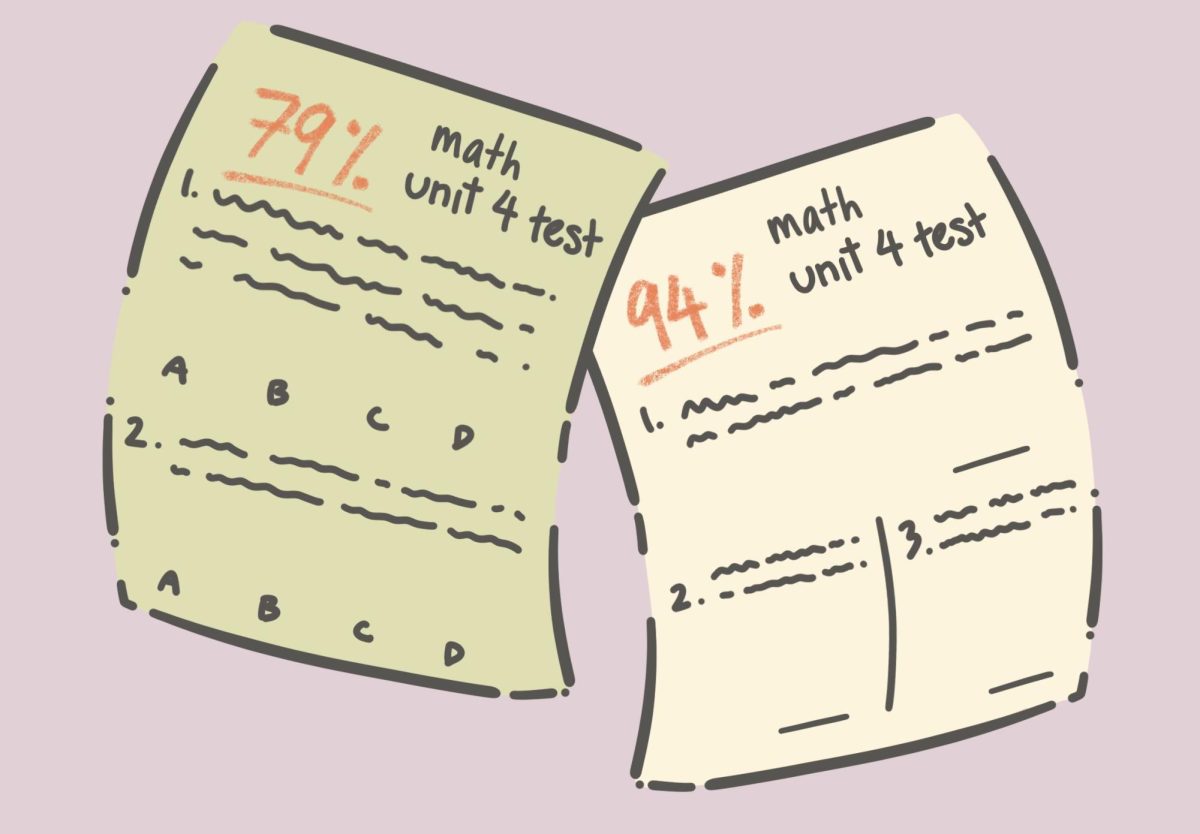Two teachers, A and B, teach the same class, but their policies differ enough that students’ experiences — and grades — are significantly affected.
For whatever reason, Teacher A decides to offer his classes an alternative and easier opportunity to boost their exam score — in lieu of the normal test retake offered for every unit exam. Naturally, seeing the discrepancy, students in Teacher B’s classes complain, but their complaints yield no compromises or modifications.
The result: Students in Teacher B’s classes perceive they are enrolled in the harder class and, in some cases, feel it is unfair that their GPAs are taking a significant hit.
These unequal opportunities are a common, recurring trend across numerous classes at Saratoga High. Teachers who teach the same subject often put their students at an unfair disadvantage or advantage due to their differing policies, rules and classroom expectations.
Especially in advanced classes, the need for standardization among teachers who teach the same class has become ever more apparent. Small differences — whether it may be the chances offered to improve exam scores, curving policies or the number of questions on tests — matter.
For numerous students, a lack of standardization can often mean the difference between ending with an A- or a B+ in a class. With several teachers unwilling to round grades and discarding pluses and minuses altogether, this problem — worsened by the fact that a B+ and B- both register as a 3.0 — hurts students’ ability to compete with others in their grade.
For the past three years, my friends have long protested at the end of the semester how they would have most likely ended with an A in a certain class if only they had the “easier” teacher who taught the same subject. While students don’t often have criticism for the way their teachers deliver the content, they claim it is the certain benefits given by other teachers that reward those students more for the same learning experience.
Take another example: Teacher C and Teacher D each teach two periods of the same subject and although pacing and content covered are the same, they hold differing policies for quizzes, curving and give different tests to their students.
In Teacher C’s class, a student is allowed to drop their lowest quiz score at the end of the semester, while Teacher D does not offer a quiz drop. Additionally, their test formats are different. Teacher C’s tests consist of a set number of free-response questions and multiple-choice problems while Teacher D’s tests offer a varied number and mix of problems.
Furthermore, it is up to each of their own discretion when curving their tests, as neither teacher has a set threshold that would constitute a curve. Teacher D ends up curving her first unit test, while Teacher C curves only her last unit test. If the tests were supposedly the same difficulty, why are curves needed for two different unit tests?
Although the curves are not substantial, students who struggle at the beginning of the semester benefit more from Teacher D’s class and students who struggle at the end benefit more from Teacher C’s approach.
What is the solution to this problem? For a start, course-alike teachers need to do a better job of standardizing their grading policies and major point assignments. Doing this would prevent the problem of students trying to switch their schedules because one teacher is known to have a harder grading policy or tests.
While I acknowledge that teachers should have the freedom to work within their own teaching style as it provides for more engaging lectures and delivery of content, teachers who teach the same subject need to come to a consensus on the opportunities they decide to give their students in order to level the playing field when in comes to students’ grades.
Areas that cry out for standardization are the difficulty and types of tests; extra or supplemental credit opportunities; test averages needed to meet and constitute a curve; types of retakes of exams that are allowed; and whether pluses and minuses are a part of students’ grades.
Within the same class, all of these policies should be the same. After all, a student’s luck in the course selection lottery should not be a factor that determines their final transcripts.




























